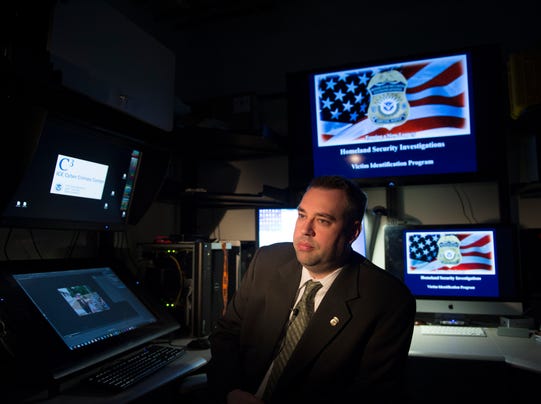
Investigators follow the trail of images around the world any way they can. They rely on traditional detective techniques, such as interviewing suspects, but they also use modern-day digital methods. They enhance blurry backgrounds for clues to a photo's location. They monitor websites popular with pedophiles. They use social media to blast photos of suspected child pornographers in the hope that someone will recognize them.
"There's no more vulnerable person than a child," says Jim Cole, who heads the child victim identification program in the federal government's Cyber Crimes Center at Homeland Security Investigations. "The first goal is to find the child and prevent further harm."
Cole spends his days on the third floor of a nondescript building in a nondescript office park in suburban Washington, D.C., poring over thousands of sexually explicit images of children.
Finding the victims is urgent, he says, because 80% of child pornography victims are abused by someone they know, most often a parent, guardian, relative or family friend. That means the abuse is probably ongoing.





 A federal judge on Tuesday rejected the Trump administration’s bid to block New York’s so-called Green...
A federal judge on Tuesday rejected the Trump administration’s bid to block New York’s so-called Green... A federal judge on Wednesday said she would block Donald Trump’s administration from laying off hundreds...
A federal judge on Wednesday said she would block Donald Trump’s administration from laying off hundreds... A top official at the U.S. Department of Education has been keeping a controversial flag linked...
A top official at the U.S. Department of Education has been keeping a controversial flag linked...






























